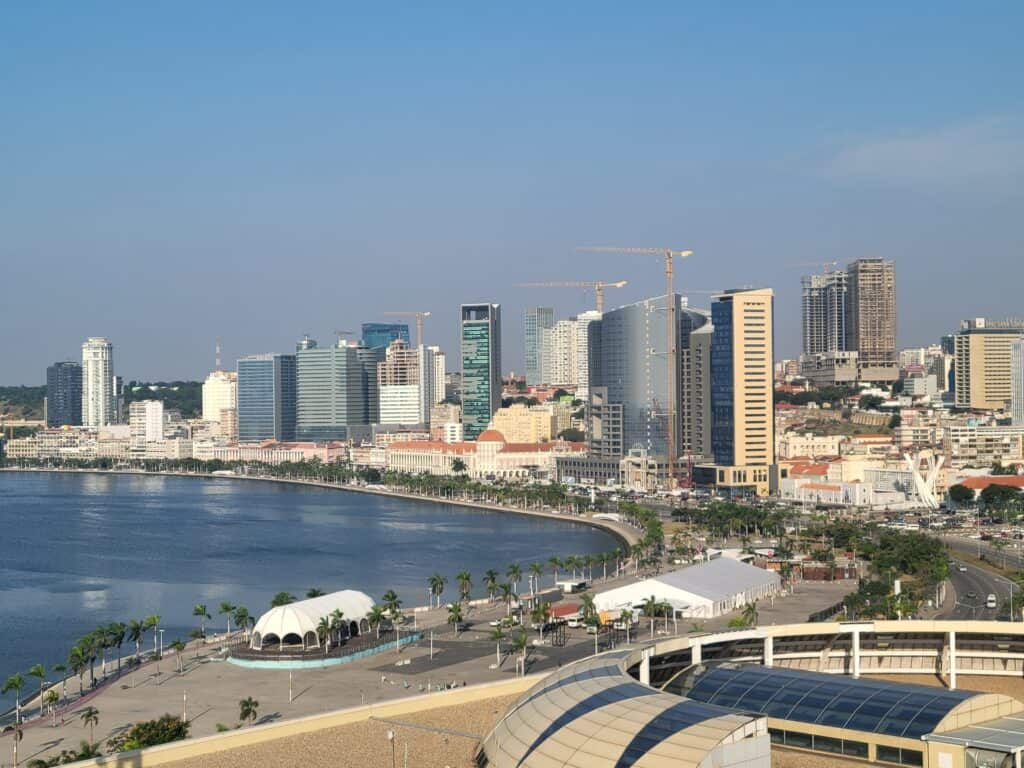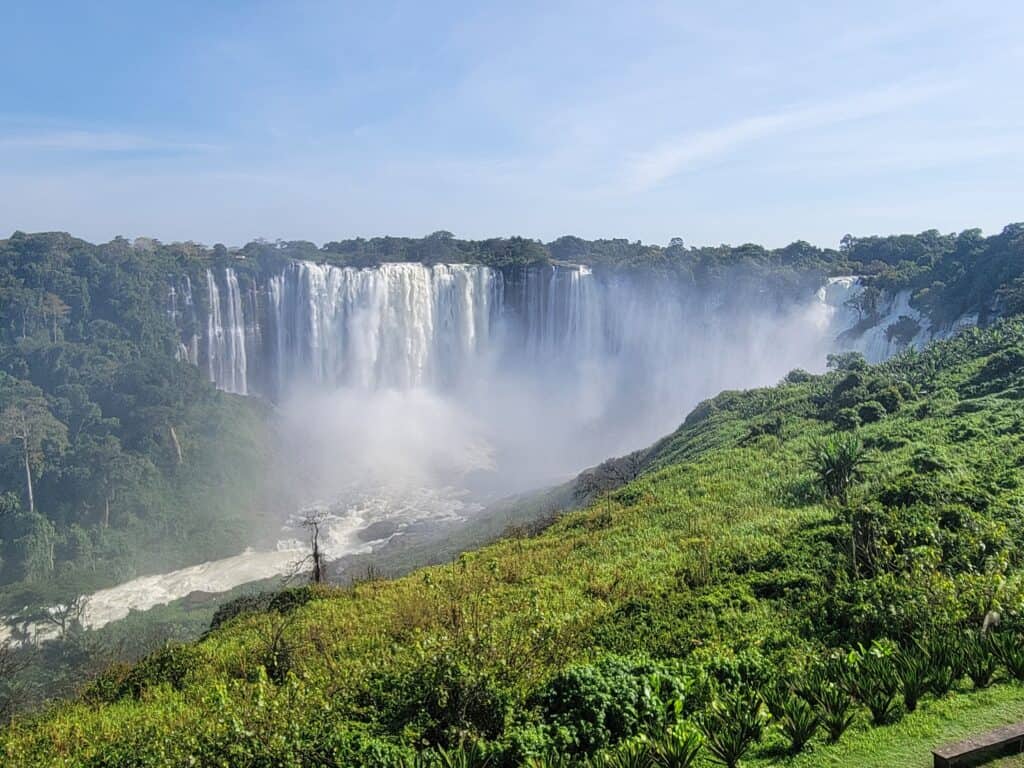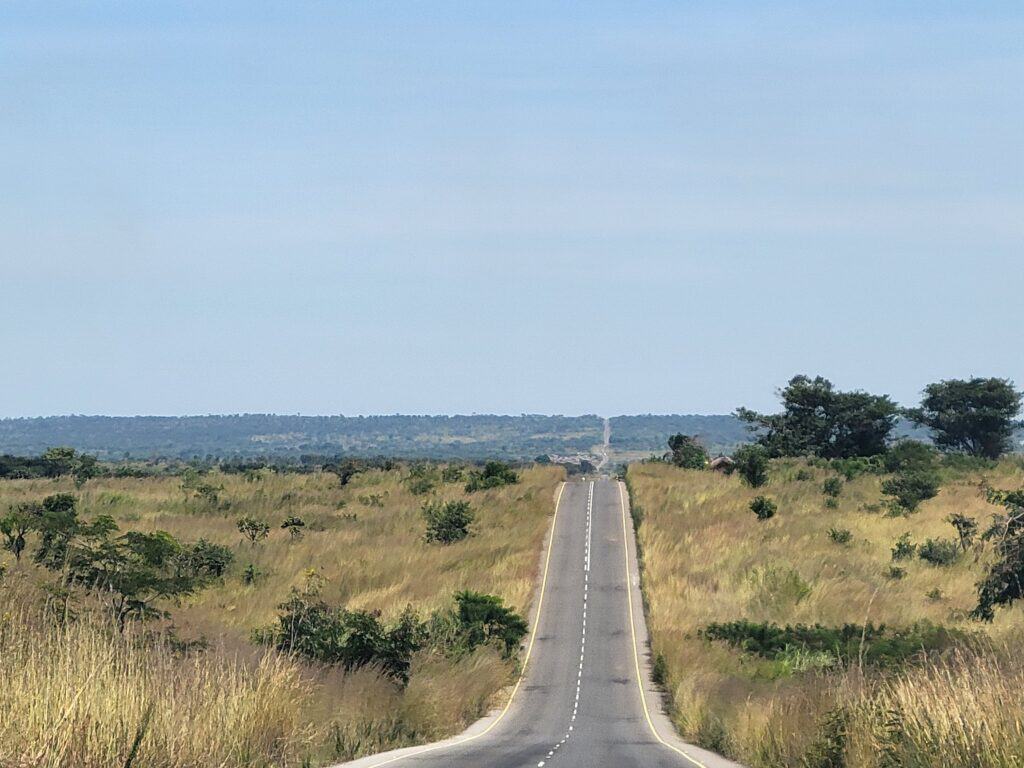Want to know if it’s possible to travel to Angola? Or how to reach some wild and natural places? ‘Angola – Why Go and What’s There?’ is our personal experience exploring this country in 2024. Our adventure includes Luanda and Calendula. We share our insights on where to stay, where to eat and drink, and things to see and do. ‘Angola – Why Go and What’s There?’ reflects our travel style and aims to provide useful things to know before visiting this obscure destination.
Angola, ‘land of the giant sable’. With a twenty-year civil war, and no funding for conservation, there’s now thought to be less than one hundred remaining. ‘Land of natural attractions‘ would be more appropriate now. Angola has been a country of mystery and intrigue for many years, with stories of war and corruption dominating the headlines. Abundant in natural resources, Angola is one of Africa’s richest countries. Yet most of the population live in poverty. Corruption and poor management have plagued the nation, but with the average age being seventeen, there is hope for the future.
Why go to Angola?
Angola isn’t a country on many peoples list of must visit places. Why? Visa requirements put many people off, and there’s very little publicity about what there is to do and discover. People are afraid of what they don’t know. But with a new Government recently elected, changes have been made, and travel here is now possible. Many countries can now enter visa free, and tour companies are beginning to appear. With the ‘Seven Wonders of Angola’, there’s some world class natural attractions to discover, that most people would never have heard of. Visiting them is not easy, and takes plenty of time, however it is now possible for the first time in years. Travelling here is a real adventure.
- Capital: Luanda
- Best time to visit: May- October
- Budget/Mid-Range/Couple: AU$100 per day
- Currency: Kwanza (AOA550 = AU$1)
- Language: Portuguese
- Visa: no
- Difficulty: 3 (1-basic & 5-challenging)

Luanda
Luanda is a city of contrasts, with a downtown area full of modern offices and apartment blocks, overlooking the water. Then only a block or two away you will find old colonial buildings, crumbling housing and packed ghettos. Range Rovers navigate the streets alongside local vans crammed with passengers. But the flash cars and buildings appear out of place. The authentic Luanda is the old buildings and the people who live there. It is the homeless children, the boys offering to polish your shoes and the street vendors. People are hungry and homeless. This is life in the city. People come here from the countryside looking for an opportunity. Luanda is not a city of rainbows and unicorns. It’s harsh. It’s Africa. But immersing yourself in the local surroundings and culture, and being respectful of it, is what travelling is about.
Getting to Luanda
Luanda is well connected, with access from Europe, Brazil, The Middle East and numerous African countries. A taxi from the Airport to the downtown area costs around Kwanza 10,000.
Where to stay in Luanda
Loads of expensive hotels in the downtown area. More affordable options are now starting to appear, with Airbnb’s becoming more popular. These are a great option, that will allow you to experience everyday life. We found a decent one in the Ze Pirao neighbourhood.
Where to eat and drink in Luanda
Luanda is a massive place, a cultural and ethnic melting pot, with the varied cuisine reflecting this. Opportunities to sample local Angolan dish’s such as funge, made from dried cassava, are easy to find. Most international cuisines, such as Ethiopian and Portuguese are also around. The streets serve as make-shift eateries, with roadside cook-ups scattered around busy areas, the lady’s frying bananas, sweet potato, corn and peanuts. These make great snacks and support the locals. Fresh fruit and vegetables will appear randomly, with woman wandering the pavement with baskets of local produce on their heads. Supermarkets are everywhere.
- Get to A Biologica (organic café serving breakfast and lunch. Lovely smoothies)
- Don’t miss Ethio-Habesha (great Ethiopian. Friendly owner who speaks English)
- Check out Cas dos Fresco (modern supermarket. Ladies sell fruit and veg outside)
Things to see and do in Luanda
Fortaleza de Sao Miguel offers a great view of the city.
Viewpoint of the Moon Unusual rock formations about an hour south of Luanda.
Ships Graveyard Abandoned ships left to rust on the beach. One hour North of Luanda.
February 4th Avenue A pleasant walkway along the waterfront with good views of the city.
Natural History Museum Interesting collection of native animals. You will have the place to yourself.
National Slavery Museum Former church now a small museum.
Art and Craft Market Best selection or art, crafts and carvings. Near the slavery museum.
Museum of Money Modern museum downtown explaining the history of money. Popular with school groups.
Ilha de Luanda The narrow strip of land extending out into Luanda Bay. Plenty of beaches and bars.
Sao Paulo Market Luanda’s largest market, with everything imaginable on offer.
Getting around Luanda
Most of the sights in the downtown area can be reached on foot. If you speak Portuguese you can get a ride on a motorbike taxi or in a local van. These don’t have destinations on them, you must listen to the guy who yells out of the window! Taxis are also an option, but these are expensive. For sights out of town, a tour is your best bet. A full day city tour will take you to all the points of interest, including out of the city spots. There’s a number of companies operating. Prices are around US$60 including lunch.

Calandula Falls
One of the seven wonders of Angola, the falls are the second biggest in Africa, and well worth the effort to get there. With a drop of over one hundred metres, they are a great sight. Over one hundred metres high, and four hundred metres wide, they can be seen and heard for miles.
Getting to Calandula Falls
The easiest way is to join a tour. Most companies in Luanda will have a trip which includes the falls. The falls tour is a two day trip, with stops along the way at various points of interest. Prices are all inclusive, and around US$400. Renting your own car is possible, but the road out here is in a bad condition, and you will need to allow a day to get here with a stop or two.
Where to stay in Calandula Falls
The Pousada Calandula Hotel is next to the falls. The views from your room and the restaurant are amazing. The nearby trails lead to some of the best viewing points. The closet town to the falls is Calandula, where you will find a handful of hotels. It’s a ten minute drive.
Where to eat and drink at Calandula Falls
- Get to The Pousada Calandula (great food and great staff with spectacular views)
- Check out Lwenze Turistico (a new hotel and restaurant in Calandula town)
Things to see and do in Calandula Falls
N’dalatando Botanical Gardens offers a quiet spot to take a break on your way to the falls.
Pungo Andongo is where you will find Black Rocks Nature Reserve. The views from the top are worth the climb.

Getting to Angola
Flying into Luanda is currently the only way to receive the visa on arrival. We flew in from Sao Tome.
Entry via land, from neighbouring Namibia, may be possible, but this would require some research beforehand.
Useful things to know before visiting Angola
Visas are no longer required for some countries. Check before departure.
It is not expensive, unless you want to stay in five-star hotels and eat at expat restaurants.
You will see homeless and hungry children.
You won’t find many people who speak English.
Getting around isn’t easy, unless you speak good Portuguese.
Infrastructure outside of Luanda is in a bad state, and travel takes a long time.
Your e-sim won’t work.
ATMs have long lines and run out of money regularly.
There’s plenty of quality supermarkets with local and international products.
Final thoughts on travelling in Angola
Angola is an adventurer’s paradise. With sights that are largely unheard of, you will be surprised and impressed by what the country has to offer. Angola is large, and getting around will take plenty of time, but the rewards when you reach your destination are truly awe inspiring. Yes, there’s a lot of poverty. You will be affected by the sights, both good and bad. It’s obvious that there’s corruption, because of the state of things. Roads are terrible, and regional airports are closed. There’s no assistance for those in need. Is it the most expensive city in Africa? No way! Maybe if you are an expat staying at the Hilton, driving a range rover with a private chauffer. But for the general traveller, it is similar, if not cheaper to any other country. But for all the negative press, there’s something positive in progress in Angola. Young people are returning. They have dreams for their country. They are the change that is needed. With entry requirements easing, other things will follow. Visiting here you feel the change. Angola has so much to offer. It’s hard to believe it’s remained obscure for this long. The secret is out.
